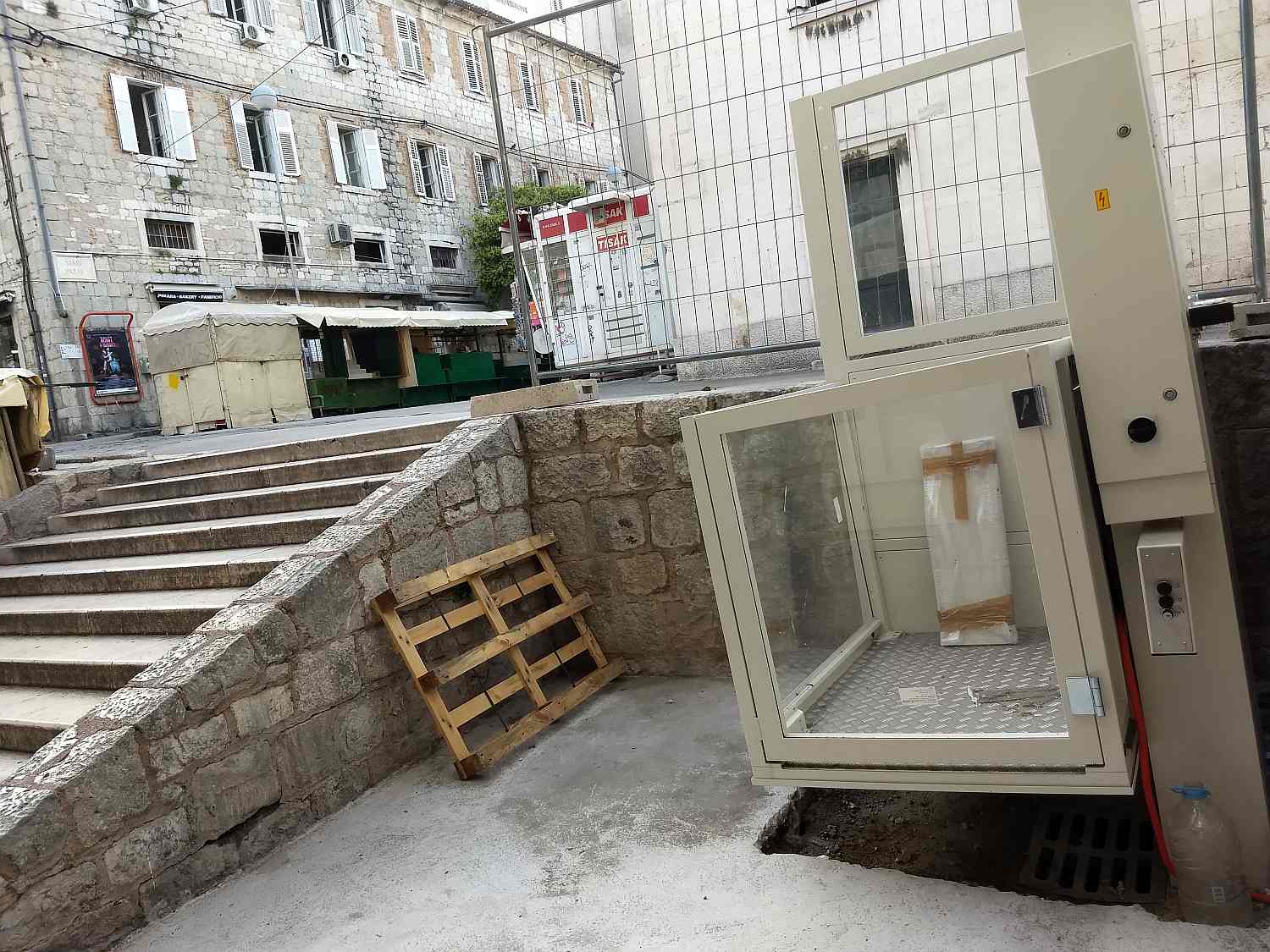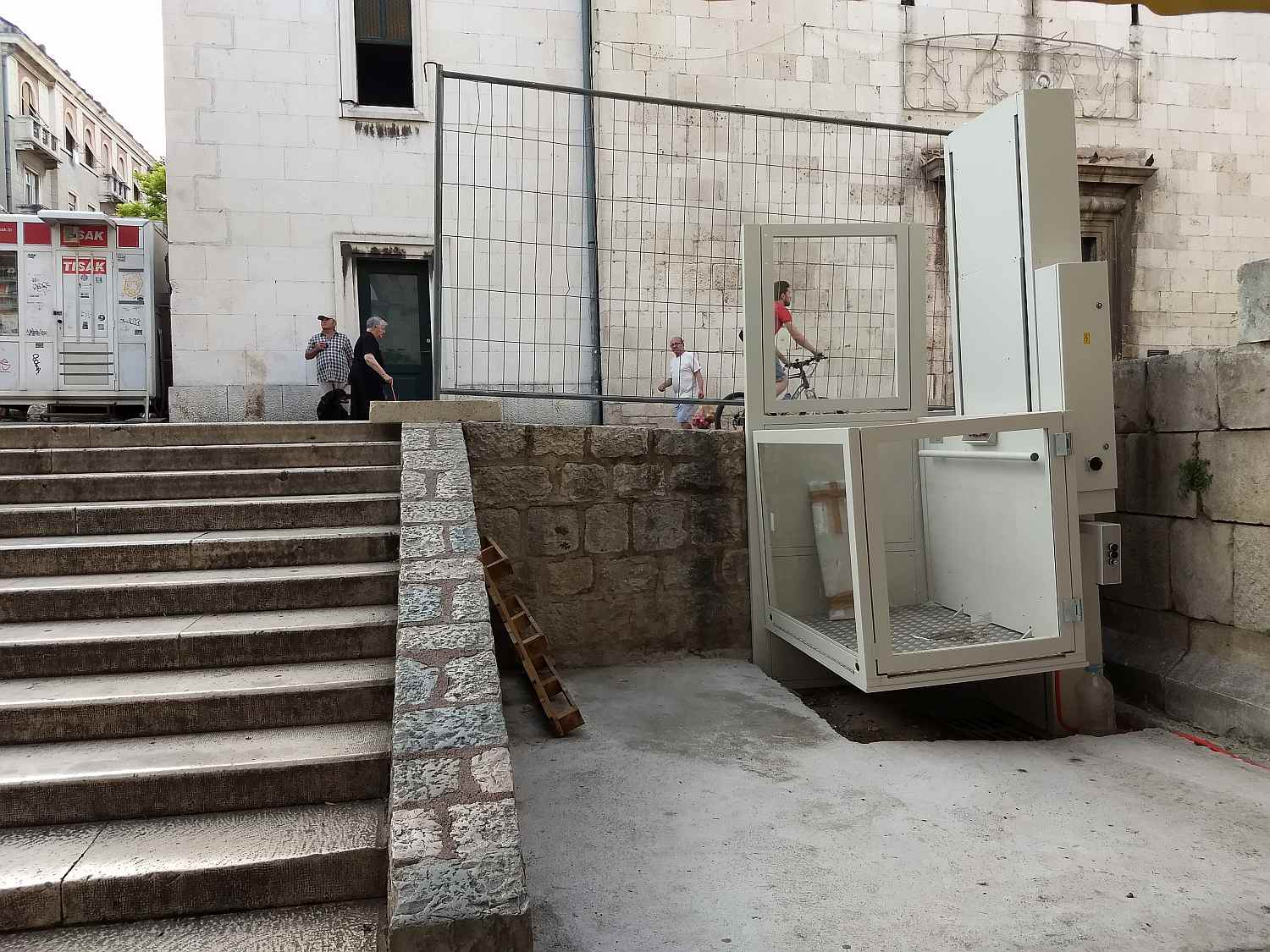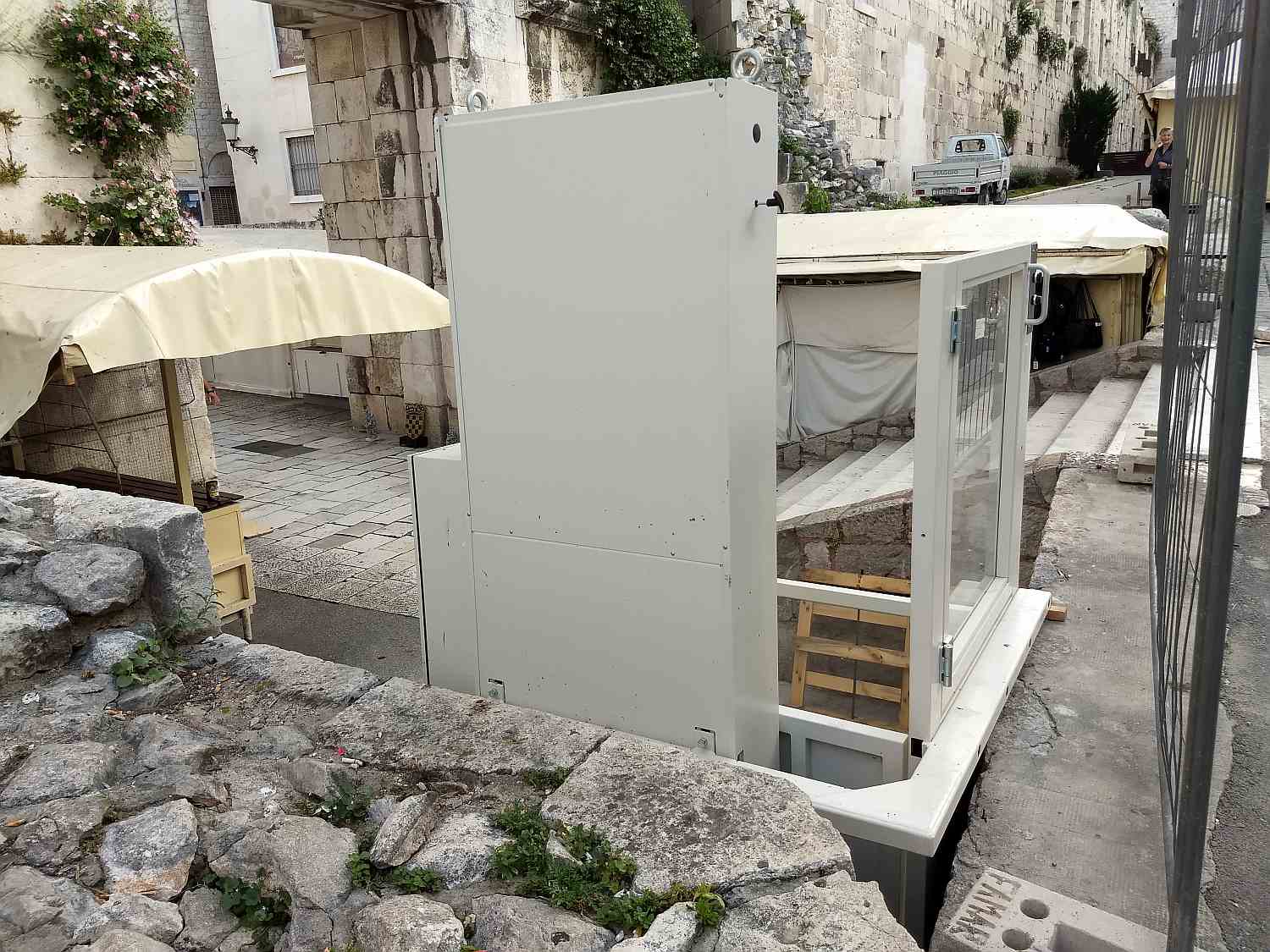Palace of Life, City of Changes: Project to Help Restore and Improve UNESCO-protected Split
October 30, 2019 - A new EU-funded project will help restore, valorize, and improve the UNESCO-protected historic center of Split and Diocletian's Palace.
Splitski Dnevnik reports that the European Union’s Ministry of Regional Development and Funds announced a tender for proposals for the “Palace of Life, City of Changes Integrated Visitor Infrastructure Development Program of the Old Town and Diocletian's Palace”, within the ITU Mechanism and Operational Program ”Competitiveness and Cohesion 2014-2020 ".
The project is developed by the City of Split, along with partners, including the Split Tourist Board and the Split City Museum. The project's total estimated value is HRK 23.8 million, of which HRK 18.2 million is available in EU funds.
The project is based on restoring, valorising, presenting and improving the UNESCO site and historic center of Split, with Diocletian's Palace, including individually protected immovable cultural property, the Old Town Hall, and objects within the protected historic entity - like the Split City Museum and the southeast tower of Diocletian's Palace, with the associated depots of the City Museum in the building at Lukačićeva 5 and the exit to the southern part of the eastern wall of the Palace. The project aims to integrate the sites into the function of sustainable development of the local community and present Split as a city of layered and vibrant cultural heritage.
Investments foreseen in the project include conservation, restoration, and construction works and furnishing the facilities above, as well as establishing modern installations that will present the history and development of Split. Thus, more than HRK 7 million will be invested in renovating and furnishing the Old Town Hall, more than HRK 2 million in renovating and furnishing the Split City Museum, and over HRK 5 million in the southeast tower with the associated premises at Lukačićeva 5 and part of the eastern wall of the Palace. Creating contemporary presentations is set at HRK 3 million.
The remainder of the investment is related to the project’s technical documentation, which includes a plan for sustainable visitor management, expert work supervision, training and workshops, visibility, setting up a ticket and visitor tracking system, designing authentic and creative souvenirs, wine and gastronomy products based on local and cultural heritage, and project management.
All of this will contribute to the development of new cultural and visitor infrastructure, relieve the most burdened localities of the old city center, and develop an awareness of the importance of preserving the heritage and its role in the sustainable development of the local community.
At the same time, following the call requirements and the indicators of the Operational Program for "Competitiveness and Cohesion", the project will contribute to increasing the number of local and foreign visitors to the newly renovated cultural heritage sites and consequently contribute to the development of Split as a year-round cultural and tourist city.
Split Development Agency - RaST d.o.o. will accept tenders until November 28, 2019, and preparatory activities are already underway.
To read more about lifestyle in Croatia, follow TCN’s dedicated page.
City of Split Continues to Improve Accessibility in Diocletian's Palace, Old City Center
In the past year and a half, the City of Split has done a great deal to adapt the public areas in the city center for people with disabilities. If you recall, back in March, a platform lift for disabled persons was set up between Marmontova and Prokurative, and over the last few days, a vertical platform lift has been implemented south of the staircase in front of the Silver Gate at Hrvojeva street, reports Dalmacija Danas on June 12, 2019.

Vjekoslav Aljinović
This is all thanks to the 'Usefall project, UNESCO Site Experience For All', which aims to facilitate the accessibility of Diocletian's Palace and the old city center of Split. The total budget of the project amounts to 1,140,554.88 euro. The City of Split received 270,000 euro in grants for the 'Usefall' project, designed to improve access to frequented locations within Diocletian's Palace. The project should be completed in June this year.
The project covers:
- Lifts in the Center for Culture and Lifelong Learning at Golden Gate, a lift/platform at the eastern entrance to the historic core (at the Silver Gate of Diocletian's Palace), and a platform lift and ramp on the west entrance to the historic core, with two passages from the Republic Square (Prokurative) to adjacent streets
- Creating maps with information on the accessibility of cultural facilities for persons with disabilities
- Organizing workshops for tourist guides, representatives of associations, and cultural institutions to inform them about the maps
- Creating braille models for blind and partially sighted people
You can see the vertical platform lift beside the staircase in front of the Silver Gate at Hrvojeva street below.



All photos by Vjekoslav Aljinović
For more information about Croatia's accessibility, check out our overview of some city guides, blog impressions, and useful numbers on Total Croatia.
To read more about lifestyle in Croatia, follow TCN’s dedicated page.
Big Brother: Split After Video Surveillance of Cultural Heritage in Center
If you don’t already feel like somebody’s watching you in Split (cue Rockwell song here), you will now.
Namely, Slobodna Dalmacija reports on June 5, 2019, that the city has announced a tender to purchase video surveillance systems for 13 public areas, and the estimated value of the equipment and its installation is 1.87 million kuna. The areas to be carefully watched include Trumbićeva obala (West Coast), Matejuška, Sv. Frane Church, Marmontova, towards Tončićeva, and Trg Gaje Bulata in front of the theater.
Ulica kralja Tomislava will be supervised at three locations - in front of the pharmacy, at the "Semafor" cafe and in front of the Art Gallery. The Golden Gate of Diocletian’s Palace will be monitored, as will the monument to Grgur Ninski, and there will be a camera at Hrvojeva to overlook Đardin. Peristyle, as expected, will also be filmed.
But that’s not all.
On the Riva, there will be video surveillance at the entrance to the Podrum, and next to the monument to Dr. Franjo Tudjman. The cameras will not escape Pjaca, either.
The surveillance equipment will be located in sensitive areas featuring precious cultural heritage, especially at the Golden Gate of Diocletian's Palace and Meštrović's prized work of Grgur Ninski. In this area, the tender calls for a pillar six meters high to fit the camera, so it will be interesting to see exactly where it would be placed.
The tender also requires columns for Ulica kralja Tomislava, Hrvojeva, and the Dr. Franjo Tudjman monument. In the tender from the City, the equipment and supporting works are said to have conservatory approval.
However, video surveillance around Split’s center is no new idea. Recall, it first came to the table in 2014 by Ivo Baldasar. The first attempt was at Peristyle, where in July 2016, cameras were placed at the Šegvić house, when it was the branch office of Splitska banka.
The Elaborate Safety Survey of Public Road Areas was also developed, and the entry and exit at Ulica Domovinskog rata and Poljička have also been approved for the video surveillance system. The main system will be located in Banovina (City Administration), and the remote monitoring that will be possible from the city administration will be performed by the selected security company, but also by the police.
As one of the conditions, it is stipulated that "the provided cameras must have the ability to mask certain parts of the cadres, to prevent the surveillance of individuals and objects."
Namely, public authorities may collect data for security when the law allows them, but they must ensure that the data they collect is protected. The person in charge of access to information should be named, the data must be kept locked, they must determine who has the entry codes in this area, and the act prescribes how the recordings are processed. Technical and organizational measures for the protection of personal data must be taken, as this video is personal information. It can be kept for six months, unless a special regulation imposes a longer deadline, said lawyer Dijanu Kladar, a legal consultant for personal data protection.
Kladar claims that you can record the public areas and the people in them, but cannot exclude certain people.
“The Personal Data Protection Agency's opinion is that they can be filmed in public surfaces, but one person cannot be picked out of the mass and put it in a newspaper without their consent,” explains Kladar.
To read more about lifestyle in Croatia, follow TCN’s dedicated page.
Too Cold to Cook? Your Delivery Guide for the Center of Split
It's winter, it's cold, and it's getting harder to get out much these days for a meal. While many of the restaurants in Split are closed, that doesn't mean that there aren't just as many open and operating, and with an added perk: delivery.

